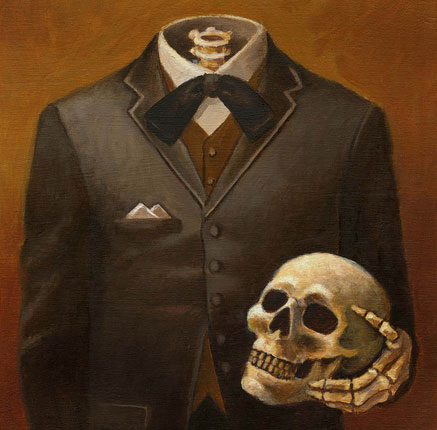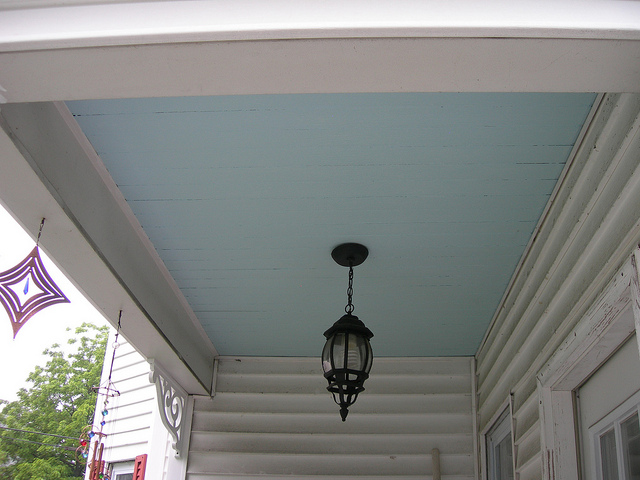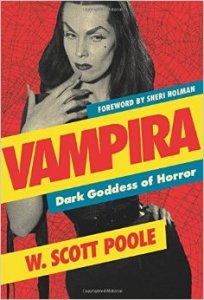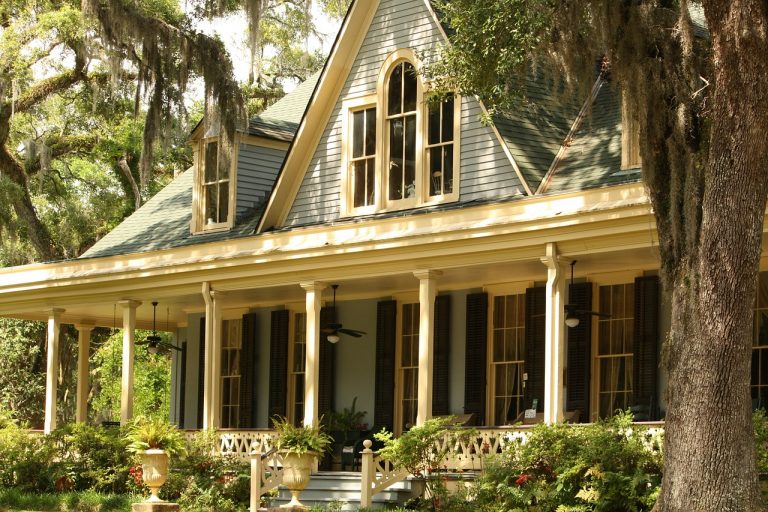Bloody Bones: A History of Southern Scares

Guest post by Vampira author and Charleston-based historian Scott Poole.
The weather in the American South may not always turn chill in October. But it’s still a region that’s as full of restless spirits as the rest of the world that celebrates Halloween. In fact, the Southern night shivers with haunts, more than a few born directly out of the region’s peculiar — and sometimes frightening — history.
Some of the most well-known regional ghost stories are frequently connected to Gullah/Geechee culture in the sea islands and lowcountry of the Carolinas and Georgia. One of the most popular of these tells of two terrifying creatures sometimes imagined as parts of the same monster. One is a skull stripped of skin and liable to bite called “Raw head” and the other its equally terrifying companion, a kind of dancing headless skeleton called “Bloody Bones.”
Occasionally, the story of Raw Head and Bloody Bones appears with a moral, at least of sorts. In one version of the tale, a gossip loses their head to the monster as punishment for their wicked tongue. Other versions connect Raw Head and Bloody Bones to the Gullah tradition of the “haint,” a general term for any kind of restless spirit that prowls at night (and comes looking for bad children).
If you are familiar with Southern folklore, you know that many of the region’s stories draw from African tales retold by enslaved people to whites over the 250 years before the Civil War. Raw Head and Bloody Bones may be an example of a legend that worked in the opposite direction, passed on by whites to their African slaves.
The story seems to have been common in England at least as early as the 1500s. One of the first mentions of the horrifying pair appears in a sermon in 1566 in which an Anglican minister warns that “Hell and the Devil” needs to be taken at least as seriously as “Grandmother’s tale of bloody bone, raw head and Ware woulfs (werewolves).” No word on whether his parishioners went away more impressed with Satan than grandmother’s worrisome stories.
At least one nursery rhyme about this nighttime terror comes from Yorkshire and shows that this story served up scares to children for centuries:
Rawhead and Bloody Bones/
Steals Naughty Children from their Homes/
Takes them to his dirty den/
And they are never seen again
If you find this a bit chilling, you aren’t alone. These stories spread throughout the region and show up in scary bedtime stories as far west as the Ozarks. Famed horror director Clive Barker even wrote the screenplay for a film based on the story called “Rawhead Rex” in 1986.

One curious phenomenon that does seem traceable to Africa has strangely migrated to the world of Southern architectural design. The painting of porch ceilings “haint blue” comes from the Kongo people of west central Africa and the belief that cerulean blue wards off the evil eye of a sorcerer. African American vernacular architecture in the South retained this practice, especially in the early 20th century, by painting window frames, doorframes and porches in various shades of blue.
Some whites painted their porches haint blue in Charleston and Savannah, though it may actually be more common today than in earlier times. Paint companies now produce versions of haint blue, and magazines dedicated to Southern haute aesthetics have recommended its use as a nod to lowcountry tradition. Unfortunately, the use of modern paint may be missing out on the real benefits of haint blue. The original recipe called for a combination of indigo and lime, making it an excellent repellent for insects, the real Southern creepy-crawlies.
 We should take our monsters more seriously though. Scary stories may seem like only the stuff of nursery rhymes and folk tales, but the monsters of the South — like all of the monsters of America — are hardwired into history. In a region shaped by slavery, the stories we have told ourselves have been correspondingly dark, tinged with the light of people who kept their cultures alive in a world they made, unwillingly, together.
We should take our monsters more seriously though. Scary stories may seem like only the stuff of nursery rhymes and folk tales, but the monsters of the South — like all of the monsters of America — are hardwired into history. In a region shaped by slavery, the stories we have told ourselves have been correspondingly dark, tinged with the light of people who kept their cultures alive in a world they made, unwillingly, together.
Photo Credits: Haint blue porch ceiling by Lake Lou from Flickr Creative Commons, and featured skeleton portrait from fab.com.
Scott Poole’s recent book Vampira: Dark Goddess of Horror is the first published biography of the eclectic life of the dancer, stripper, TV actress and artist Maila Nurmi, who would come to be known as Vampira and would pave the way for women like Elvira, Madonna and Lady Gaga. Poole teaches at the College of Charleston and has written widely about American history, horror and pop culture.




Erin / December 29, 2016
My grandfather told us grand kids not to go into the attic in his Chapel Hill, NC home because Raw Head and Bloody Bones lived there! That was sufficient to keep us out! I am thrilled to learn the history behind these characters as I have never forgotten them.
Pingback:10 More Macabre Folktales From Around The World | Friday News / December 30, 2017
Pingback:Haint Blue, the Ghost-Tricking Color of Southern Homes and Gullah Folktales - The Awl / January 16, 2018
Pingback:南京夜网,南京桑拿,南京梧桐客栈-Powered by Aguafuerte! / March 8, 2018
Pingback:Rawhead and Bloody Bones – oh, come now. / January 26, 2019
Pingback:Red Eyes (and Black Dogs and Water Spirits) – Karma Soup / May 17, 2019
Barb / February 1, 2020
Blue ceilings also repel wasps How does a story about Bloody Bones turn into racial innuendos? It “may”, it “might”, “could have”. Give it a rest.
Pingback:Folklore’s Scariest Creatures: Rawhead and Bloody Bones – Writing Werewolf / June 11, 2020
Pingback:Red Eyes (and Black Dogs and Water Spirits) – Seraphin Station / January 15, 2021
Jeffery Holley / July 28, 2021
My dad told me stories starting when I was five about Tantibogus and Bloody bones, but I don’t recall him ever telling about Raw head. I always thought he made those stories up himself!
Lynda Bechel / January 26, 2023
I have been looking/searching for some connection to tantibogus! My grandmother would tell us about him, and she’s the only one I ever heard tell us about him! I haven’t been able to find the origin of this one.
Pingback:Ep 50 – A Collection of Southern Folklore – Haunted Hospitality Podcast / March 8, 2022
Becky Stacy / June 19, 2022
Honestly thought my mom made it up! We’d be told he was hiding under the bed and would get us if we were to get out. I mean, honestly, what kid is going to be able to sleep after picturing that!? Lol. I’m sure parents don’t tell these things nnowadays.. just us 70’s & 80’s kids got that treatment! Lol.
Becky Stacy / June 19, 2022
What this from Dolly
Parton about it!
https://youtu.be/ZKgsWlwRj9k
Pingback:Bloody Bones – Mississippi Folklore / July 21, 2022
Pingback:Bloody Bones – Mississippi Folklore / April 20, 2023